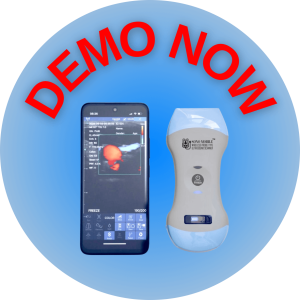Mobile ultrasound is an essential tool in critical care settings, providing numerous benefits for the management of critically ill patients. Here are detailed ways in which mobile ultrasound is utilized in critical care:
Rapid Diagnosis and Decision-Making:
- Cardiac Assessment: Quickly assess cardiac function, detect pericardial effusion, cardiac tamponade, or acute myocardial infarction.
- Lung Evaluation: Diagnose pneumothorax, pleural effusion, pulmonary edema, or pneumonia.
- Abdominal and Pelvic Scans: Identify causes of acute abdominal pain, such as intra-abdominal bleeding, bowel obstructions, or ascites.
Guidance for Invasive Procedures:
- Central Venous Catheterization: Improve accuracy and reduce complications when placing central lines.
- Arterial Line Placement: Assist in precise placement of arterial lines for monitoring blood pressure and drawing arterial blood gasses.
- Thoracentesis and Paracentesis: Safely guide needle insertion to drain fluid from the pleural or abdominal cavities.
- Pericardiocentesis: Guide needle placement to relieve pericardial effusion.
Hemodynamic Monitoring:
- Cardiac Function: Assess left and right ventricular function, ejection fraction, and wall motion abnormalities.
- Fluid Status: Evaluate volume status and fluid responsiveness using measurements like inferior vena cava (IVC) diameter and collapsibility.
- Vascular Resistance: Assess systemic vascular resistance and guide fluid and vasopressor therapy.
Lung Ultrasound:
- Diagnosis: Identify conditions like pleural effusions, pneumothorax, pulmonary edema, and interstitial syndrome.
- Ventilator Management: Evaluate lung aeration and guide adjustments in ventilatory settings.
Abdominal and Pelvic Assessment:
- Organ Evaluation: Examine liver, kidneys, bladder, and other organs for abnormalities or injuries.
- Abdominal Aorta: Assess for aneurysms or dissections.
Neurological Assessment:
- Transcranial Doppler Ultrasound: Evaluate cerebral blood flow and intracranial pressure, particularly in patients with head injuries or strokes.
Monitoring for Complications:
- Deep Vein Thrombosis (DVT): Screen for DVT in critically ill patients who are at high risk for thrombosis.
- Early Detection: Continuously monitor for complications such as bleeding, fluid overload, or changes in organ function.
Vascular Access:
- Peripheral and Central Lines: Improve success rates and safety for peripheral IV and central venous catheter placements.
- Dialysis Catheters: Guide placement of dialysis catheters in patients requiring renal replacement therapy.
Diaphragm and Respiratory Muscle Assessment:
- Diaphragm Function: Assess diaphragm movement and function, which is critical in weaning patients off mechanical ventilation.
Portability and Accessibility:
- Bedside Imaging: Perform imaging at the patient’s bedside, avoiding the need to transport critically ill patients to the radiology department.
- Remote Locations: Use in various locations within the hospital, including emergency rooms, operating theaters, and even during transport.
- Education and Training:
- Teaching Tool: Train healthcare providers in bedside ultrasound techniques, enhancing their diagnostic and procedural skills.
- Telemedicine and Remote Consultations:
- Expert Guidance: Facilitate remote consultations with ultrasound images shared in real-time, allowing experts to guide procedures or offer second opinions.
- Non-Invasive and Repeated Use:
- Safety: Provide a non-invasive and safe imaging modality that can be used repeatedly without exposing patients to radiation.
In summary, mobile ultrasound is a versatile, non-invasive tool that enhances the capability of critical care teams to diagnose, monitor, and treat critically ill patients efficiently and safely, leading to improved patient outcomes.



